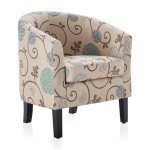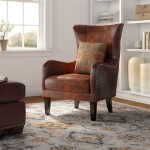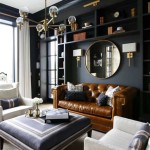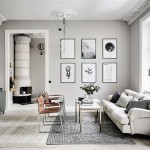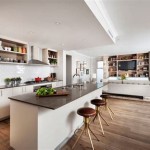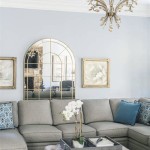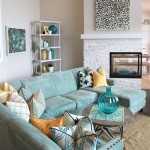```html
Modern Living Room Color Schemes: A Comprehensive Guide
The living room, often considered the heart of a home, serves as a space for relaxation, entertainment, and social interaction. Therefore, selecting an appropriate color scheme is crucial for creating an inviting and aesthetically pleasing environment. Modern living room color schemes often prioritize simplicity, sophistication, and a connection to nature, while also incorporating trends and personal preferences. This article provides a comprehensive exploration of contemporary color palettes suitable for modern living rooms, focusing on key concepts and practical applications.
Understanding the Fundamentals of Color Theory
Before delving into specific color schemes, it's important to understand the basics of color theory. The color wheel traditionally consists of twelve colors: three primary colors (red, yellow, and blue); three secondary colors (green, orange, and violet, created by mixing primary colors); and six tertiary colors (created by mixing a primary and a secondary color). Understanding the relationships between colors on the wheel is fundamental to creating harmonious and balanced spaces.
Complementary colors are those that sit opposite each other on the color wheel (e.g., red and green, blue and orange, yellow and violet). Using complementary colors creates high contrast and visual excitement. However, it’s often best to use one color as the dominant hue and the other as an accent to avoid overwhelming the space.
Analogous colors are those that are adjacent to each other on the color wheel (e.g., blue, blue-green, and green). Analogous color schemes create a sense of harmony and serenity. These schemes are generally easier to work with than complementary schemes and are suitable for creating a calming and relaxing atmosphere.
Monochromatic color schemes utilize variations of a single color, incorporating different shades, tints, and tones. This approach creates a cohesive and sophisticated look, allowing for subtle variations in texture and material to add depth and interest.
Neutral color schemes rely on colors such as white, gray, beige, and black. These schemes are versatile and timeless, providing a blank canvas for adding pops of color through artwork, accessories, and textiles. Neutral schemes can be warm or cool depending on the undertones of the chosen colors.
Popular Modern Living Room Color Palettes
The definition of "modern" is ever-evolving, but it generally reflects a clean, uncluttered aesthetic with an emphasis on functionality and visual appeal. In the context of color schemes, this translates to palettes that are often understated, sophisticated, and adaptable. Several popular modern color palettes consistently emerge as successful choices for living room design.
Gray and Greige Palettes: Gray has become a mainstay in modern interiors, offering a neutral base that can be easily paired with a variety of colors. Greige, a blend of gray and beige, provides a warmer alternative, offering similar versatility with a softer feel. These palettes often incorporate different shades of gray or greige, along with accents of white, black, and natural wood tones. Adding pops of color like teal, mustard yellow, or blush pink can inject personality and visual interest.
Earthy Tones: Drawing inspiration from nature, earthy tones create a sense of warmth and grounding. These palettes typically include shades of brown, beige, terracotta, olive green, and muted yellows. Earthy tones can be combined with natural materials like wood, stone, and linen to enhance the organic feel of the space. Accents of metallic gold or bronze can add a touch of sophistication.
Blue and White Combinations: Blue is a versatile color that can evoke feelings of tranquility, sophistication, or energy, depending on the shade. Combining blue with white creates a classic and timeless look that is well-suited to modern living rooms. Lighter shades of blue, such as sky blue or pale turquoise, can create a light and airy atmosphere, while darker shades, such as navy or indigo, can add a sense of depth and drama. Accents of natural wood, metallic silver, or pops of coral can complement this palette.
Monochromatic Neutrals: A monochromatic neutral color scheme uses varying shades of the same neutral color, like beige, gray, or white, to create a cohesive and sophisticated space. This approach is all about layering different textures and materials to add depth and prevent the room from feeling flat or sterile. For instance, a living room might feature a light gray sofa, darker gray throw pillows, a textured gray rug, and white walls with a subtle gray undertone. The key is to create subtle variations within the monochromatic palette.
Jewel Tones with Neutral Backdrops: Jewel tones, such as emerald green, sapphire blue, ruby red, and amethyst purple, can add richness and drama to a modern living room. To avoid overwhelming the space, it’s best to use jewel tones as accent colors against a neutral backdrop of white, gray, or beige. Jewel-toned throw pillows, artwork, or accent furniture can create focal points and add a touch of luxury. Careful consideration should be given to the intensity and placement of these colors to maintain balance.
Practical Considerations for Choosing a Color Scheme
Selecting a color scheme involves more than just personal preference; several practical factors should be considered to ensure that the chosen palette is appropriate for the space and lifestyle. These include the size and lighting conditions of the room, the existing architectural features, and the desired mood and functionality of the living area.
Room Size and Lighting: Light colors tend to make a room appear larger and brighter, while dark colors can make a room feel smaller and more intimate. In small living rooms, lighter color schemes are generally preferable to maximize the sense of space. Conversely, in large living rooms, darker colors can be used to create a more cozy and inviting atmosphere. Natural light also plays a significant role. Rooms with ample natural light can handle bolder and darker colors, while rooms with limited natural light benefit from lighter, more reflective colors.
Architectural Features: Existing architectural features, such as fireplaces, moldings, and built-in shelving, should be taken into account when selecting a color scheme. These features can either be highlighted or minimized depending on the chosen colors. For example, painting a fireplace a contrasting color can make it a focal point, while painting it the same color as the walls can help it blend in seamlessly. Similarly, the color of moldings and trim can affect the overall look and feel of the room. White trim is a classic choice that works well with a variety of color schemes, while darker trim can add a touch of drama and sophistication.
Desired Mood and Functionality: The color scheme should also reflect the desired mood and functionality of the living room. For example, a living room intended for relaxation and relaxation might benefit from a calming color scheme, such as blues, greens, or neutrals. Conversely, a living room intended for entertaining and socializing might benefit from a more energetic color scheme, such as reds, oranges, or yellows. The choice of colors should also consider the daily activities that take place in the living room. If the living room is used for watching television, darker colors may be preferable to minimize glare. If the living room is used for reading, brighter colors may be preferable to provide adequate illumination.
Testing and Sampling: Before committing to a particular color scheme, it's always a good idea to test and sample the colors in the actual space. Paint samples can be applied to a small area of the wall to see how the colors look in different lighting conditions. Fabric swatches can be used to assess how the colors work with existing furniture and decor. This process allows for adjustments and refinements to be made before making a final decision.
Ultimately, the ideal modern living room color scheme is one that reflects the homeowner's personal style and preferences, while also taking into account the practical considerations of the space. By understanding the fundamentals of color theory, exploring popular color palettes, and considering the specific characteristics of the living room, it is possible to create a beautiful and functional space that meets the needs and desires of its inhabitants.
```
17 Living Room Color Palettes Our Designers Love Havenly Interior Design Blog

17 Living Room Color Palettes Our Designers Love Havenly Interior Design Blog

Blue Living Room Design Ideas For Your Home Designcafe

30 Best Living Room Color Schemes Stag Manor

30 Best Living Room Color Ideas Schemes Decoholic

7 Living Room Color Schemes That Will Make Your Space Look Professionally Designed

30 Living Room Paint Colors Inspiration For An Inviting Space Beamin Moore
How To Create A Color Palette For Your Room

50 Best Living Room Paint Ideas Colors

How To Choose A Monochromatic Living Room Color Scheme The Home

